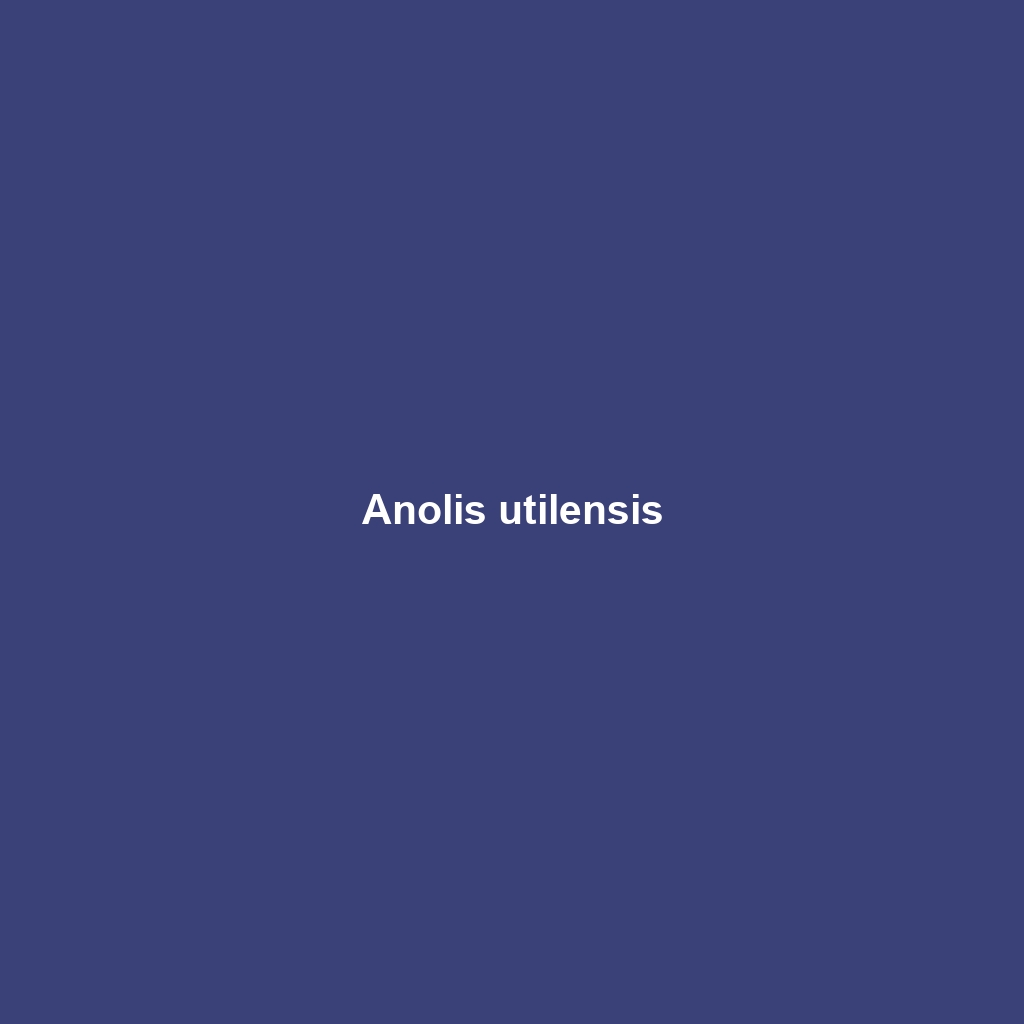Species Description: Anolis utilensis
Common Name: Anolis utilensis
Scientific Name: Anolis utilensis
Habitat
Anolis utilensis is primarily found in the lush tropical forests of the Caribbean, specifically on the island of Utila in Honduras. This species prefers humid, subtropical environments that provide plenty of foliage and basking opportunities. It can often be seen in trees, shrubs, and sometimes even in residential areas, where its adaptability to different habitats allows it to thrive.
Physical Characteristics
Anolis utilensis typically reaches a size of about 4 to 6 inches in length, including the tail. This species generally exhibits vibrant green to brown coloration, which helps it blend into its leafy surroundings. Distinctive features of Anolis utilensis include a relatively short and slender body, along with a pronounced dewlap which is often brightly colored and used during mating displays. The combination of size and coloration makes it easily recognizable among the diverse anole family.
Behavior
This species is diurnal, becoming active during the day. Anolis utilensis is known for its remarkable climbing abilities, often seen navigating through tree branches with agility. It showcases territorial behavior, with males displaying their brightly colored dewlaps to assert dominance and attract females. They are also known to exhibit a basking behavior, where they spend time in sunlight to regulate their body temperature.
Diet
Anolis utilensis primarily feeds on a diet of small insects, including ants, termites, and various types of flies. Its feeding habits are closely related to its habitat, as it often forages among the vegetation. The species uses its keen eyesight to spot prey from a distance before swiftly capturing it with its agile tongue.
Reproduction
Breeding season for Anolis utilensis typically occurs from late spring to early summer. Males engage in elaborate courtship displays to attract females, which include head bobs and dewlap extensions. After mating, females lay small clutches of eggs in moist soil or leaf litter, and the incubation period lasts about 6 to 8 weeks before hatching occurs, resulting in miniatures of the adults.
Conservation Status
Currently, Anolis utilensis is classified as ‘Vulnerable’ due to habitat loss and environmental changes impacting its native range. Preservation of its habitat is critical for the survival of this species, and conservation efforts are being made to protect its natural environment.
Interesting Facts
One fascinating fact about Anolis utilensis is its capacity for color change, which is not only a camouflage mechanism but also a means of communication among individuals. Additionally, this species is known for its unique ability to regenerate its tail after losing it, a common trait among lizards.
Role in Ecosystem
Anolis utilensis plays a vital role in its ecosystem as a pest controller, helping to regulate insect populations. Its presence contributes to the balance of the food chain, where it serves as both predator to insects and prey to larger birds and reptiles. This species also serves as an important pollinator for certain plants, aiding in the overall health of its tropical habitat.
